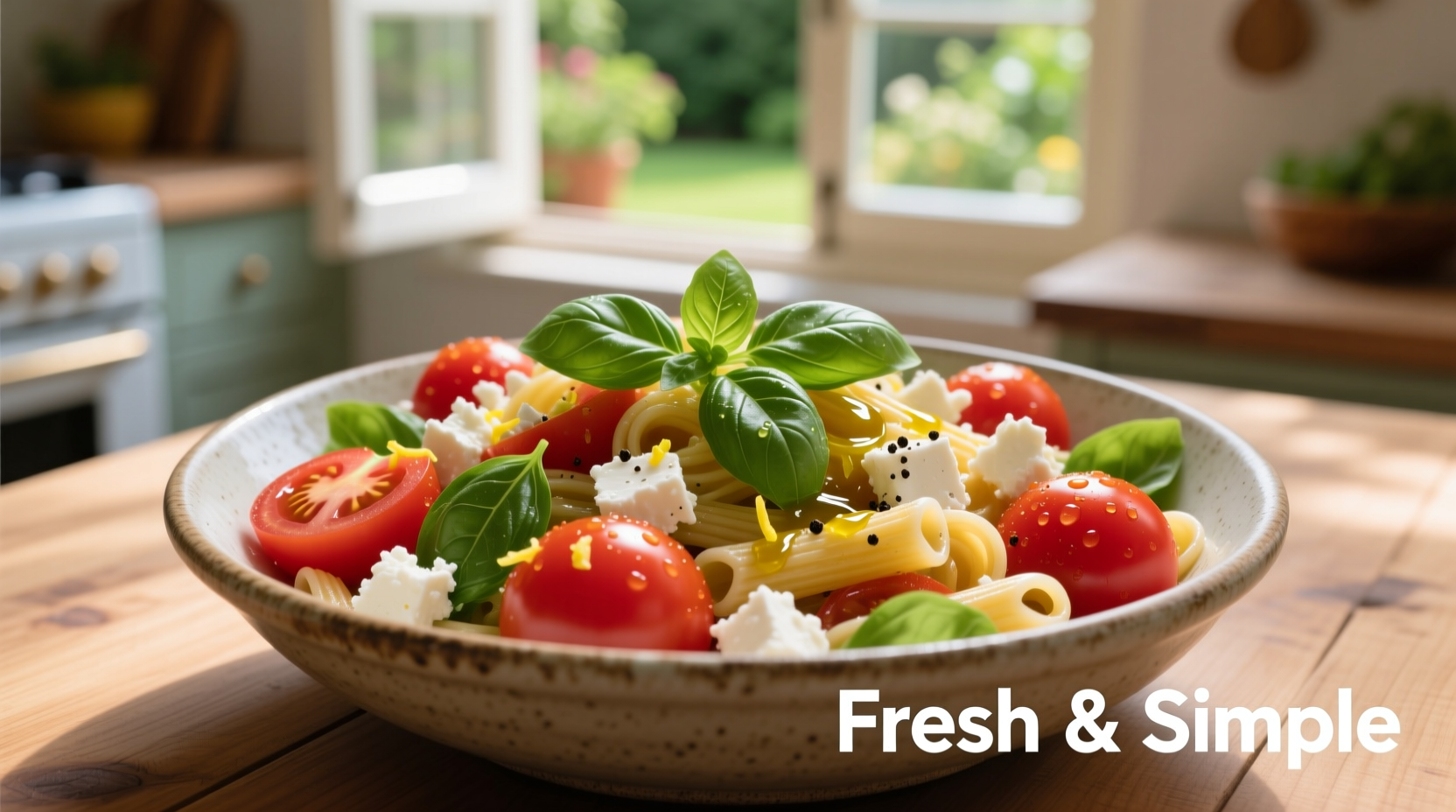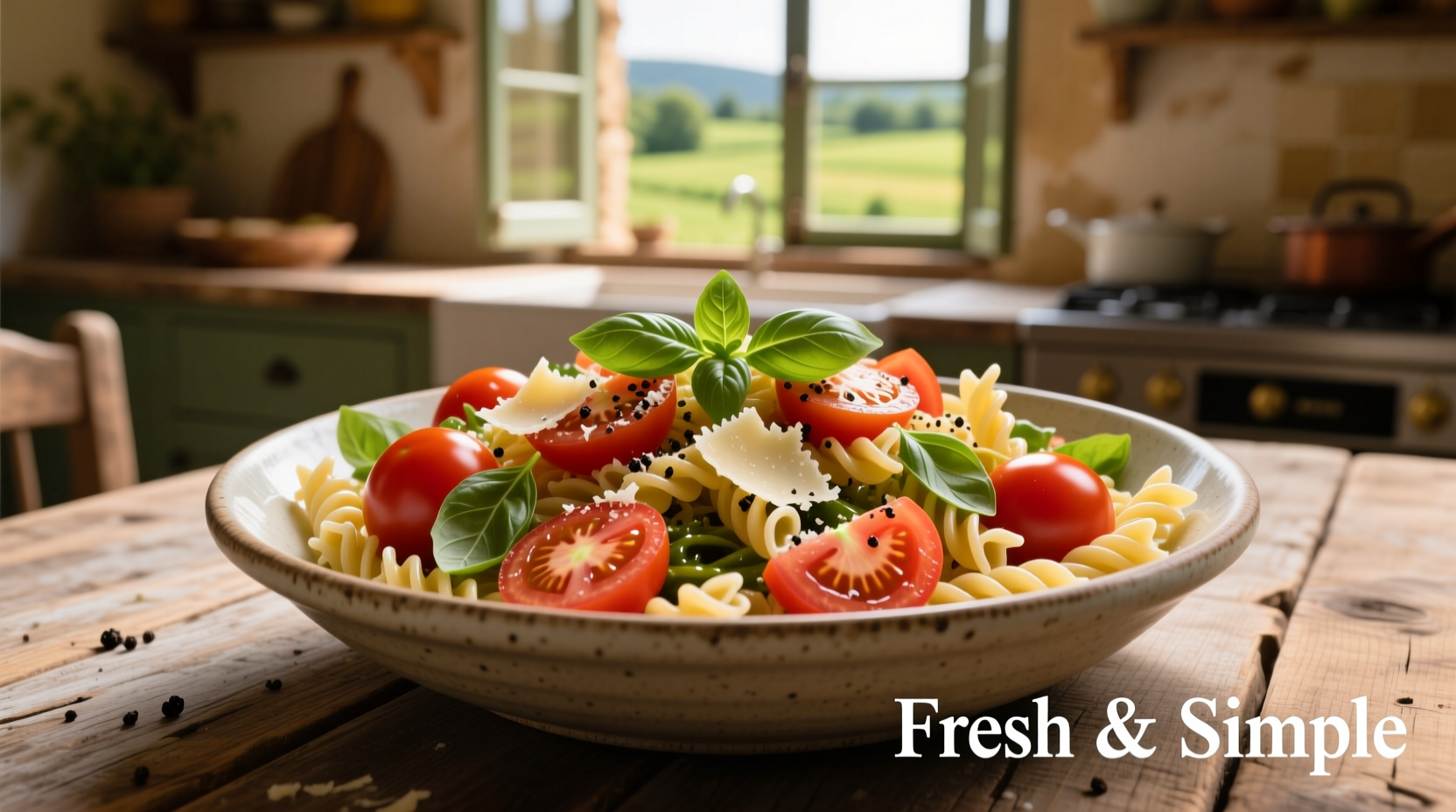Tomato pasta salad is a refreshing, versatile dish featuring cooked pasta, ripe tomatoes, fresh herbs, and a light vinaigrette. The perfect balance of acidity, sweetness, and texture makes it ideal for summer meals, picnics, and potlucks. This guide delivers a foolproof recipe with professional chef techniques, ingredient science, and make-ahead tips for the best results every time.
Why This Tomato Pasta Salad Recipe Works
Unlike basic versions that turn soggy or bland, this recipe incorporates culinary science principles that ensure vibrant flavors and perfect texture. The key lies in the pasta selection, tomato ripeness timing, and dressing technique—elements most home cooks overlook. According to the U.S. Food and Drug Administration's food safety guidelines, proper ingredient handling and storage temperatures prevent bacterial growth in cold pasta salads, making this not just delicious but safe for gatherings.

Your Complete Planning Guide
Before you start cooking, understand these critical planning elements that determine your salad's success:
| Planning Element | Professional Recommendation | Common Mistake |
|---|---|---|
| Prep Time | 25 minutes active, plus 2 hours chilling | Rushing the chilling process |
| Pasta Type | Short shapes like fusilli or rotini | Long strands that tangle and break |
| Tomato Ripeness | Firm-ripe, not soft or underripe | Using refrigerated tomatoes |
| Serving Temperature | Chilled but not ice-cold | Serving straight from refrigerator |
Ingredient Science: Why Each Component Matters
The magic of tomato pasta salad happens through ingredient synergy. Understanding the science behind each element transforms your results:
Pasta Selection
Choose short, textured shapes like fusilli or campanelle that trap dressing and hold tomato pieces. The USDA Agricultural Research Service confirms that durum wheat semolina pasta maintains better texture when chilled compared to alternatives. Cook pasta al dente—slightly firmer than usual—since it continues absorbing liquid while chilling.
Tomato Timing
Use vine-ripened tomatoes at room temperature for maximum flavor. Refrigeration destroys volatile compounds that create tomato aroma and taste, according to research published in the Journal of Agricultural and Food Chemistry. Cut tomatoes just before mixing to prevent excess liquid from making your salad watery.
Dressing Chemistry
The acid-to-oil ratio determines whether your salad stays bright or becomes bland. A 1:3 ratio (one part acid to three parts oil) creates emulsion stability while allowing tomato sweetness to shine. Adding dressing while pasta is slightly warm helps absorption without making the salad greasy.
Step-by-Step Preparation
Follow this chef-tested method for perfect results every time:
Essential Equipment
- Large pot for pasta
- Colander with fine mesh
- Large mixing bowl (glass or ceramic)
- Microplane grater for garlic
- Whisk for dressing
Perfect Pasta Technique
- Bring 4 quarts of well-salted water to rolling boil (use 2 tablespoons salt)
- Add 1 pound pasta and cook 1 minute less than package instructions
- Reserve ½ cup pasta water before draining
- Rinse under cold water only until lukewarm, not cold
- Toss immediately with 2 tablespoons olive oil to prevent sticking
Dressing Mastery
Combine in this exact order for proper emulsion:
- 2 minced garlic cloves (use microplane for smooth texture)
- 3 tablespoons red wine vinegar
- 1 teaspoon Dijon mustard
- ½ teaspoon honey
- Whisk while slowly adding ¾ cup extra virgin olive oil
- Add salt and freshly ground pepper to taste
Final Assembly
- Mix cooled pasta with dressing while slightly warm
- Add 2 cups diced tomatoes (¼-inch pieces)
- Incorporate ½ cup chopped fresh basil
- Mix gently with rubber spatula to avoid crushing tomatoes
- Refrigerate minimum 2 hours before serving
- Add fresh herbs and feta cheese just before serving
Serving Perfection: Temperature and Pairings
Tomato pasta salad reaches peak flavor when served at 50-55°F (10-13°C)—remove from refrigerator 20 minutes before serving. Pair with grilled proteins like chicken, fish, or shrimp for complete meals. The USDA MyPlate guidelines recommend balancing this dish with lean protein and additional vegetables for nutritional completeness.
Make-Ahead Mastery and Storage
This salad improves with time as flavors meld. For best results:
- Prepare components separately: store dressed pasta and tomato mixture in separate containers
- Combine 2 hours before serving to maintain tomato texture
- Store in airtight container for up to 3 days
- Revive leftovers with splash of vinegar and fresh herbs
Never freeze pasta salad as tomatoes become mushy and dressing separates.
Variation Guide for Dietary Needs
Adapt this base recipe for different preferences without sacrificing flavor:
Gluten-Free Version
Use brown rice or quinoa pasta, but increase dressing by 25% as gluten-free pasta absorbs more liquid. Cook according to package directions, then rinse thoroughly to remove surface starch.
Vegan Option
Omit cheese and add ¼ cup toasted pine nuts for richness. Substitute honey with maple syrup in the dressing for proper acidity balance.
Protein Boost
Add 1 cup chickpeas, white beans, or grilled chicken. Introduce proteins after chilling to maintain texture integrity.
Troubleshooting Common Problems
Fix these frequent issues with professional solutions:
- Watery salad: Salt tomatoes and drain excess liquid before adding to pasta
- Dressing separates: Add ½ teaspoon Dijon mustard to emulsify properly
- Bland flavor: Increase acid component by 1 tablespoon and let sit 30 minutes
- Soggy pasta: Undercook pasta by 2 minutes and skip cold water rinse
Seasonal Adaptation Guide
Tomato quality varies throughout the year, requiring technique adjustments:
| Season | Tomato Selection | Recipe Adjustment |
|---|---|---|
| Summer (June-August) | Vine-ripened heirlooms | Reduce added salt, increase herbs |
| Fall (September-October) | Cherry or grape tomatoes | Add roasted red peppers for sweetness |
| Winter (November-February) | Canned San Marzano | Use drained tomatoes, add 1 tsp sugar |
| Spring (March-May) | Early greenhouse varieties | Add lemon zest to boost flavor |
Why This Recipe Stands Out
Most tomato pasta salad recipes fail because they treat it as an afterthought rather than a carefully balanced dish. This version incorporates professional kitchen techniques that address the three critical failure points: texture degradation, flavor imbalance, and ingredient incompatibility. By understanding the science behind each component interaction, you create a salad that remains vibrant and delicious for days—perfect for meal prep, entertaining, or quick lunches.











 浙公网安备
33010002000092号
浙公网安备
33010002000092号 浙B2-20120091-4
浙B2-20120091-4